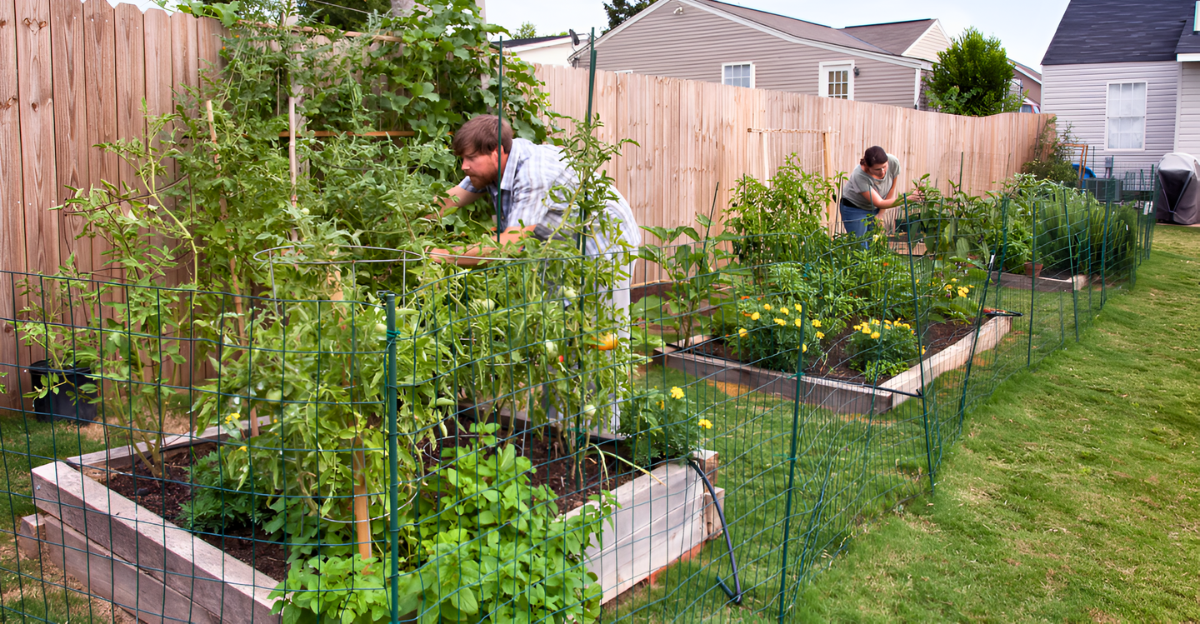
Whether you are a beginner or an expert gardener, the summer heat is enough to make any of us feel like wilting.
While we feel we might not survive the heat, some plants are true fighters, able to thrive and stay green regardless of the heat! While these heat-loving plants will keep your garden looking lush and brighten it up, they will also help reduce your water expenditure (maybe even some stress levels).
There is a range of flowers, edibles, and even architectural foliage. So, let’s take a look at the nine plants that will keep your garden looking fresh and amazing no matter how hot it gets. I will leave you to decide which of these winners deserves a spot in your garden.
1. Lantana
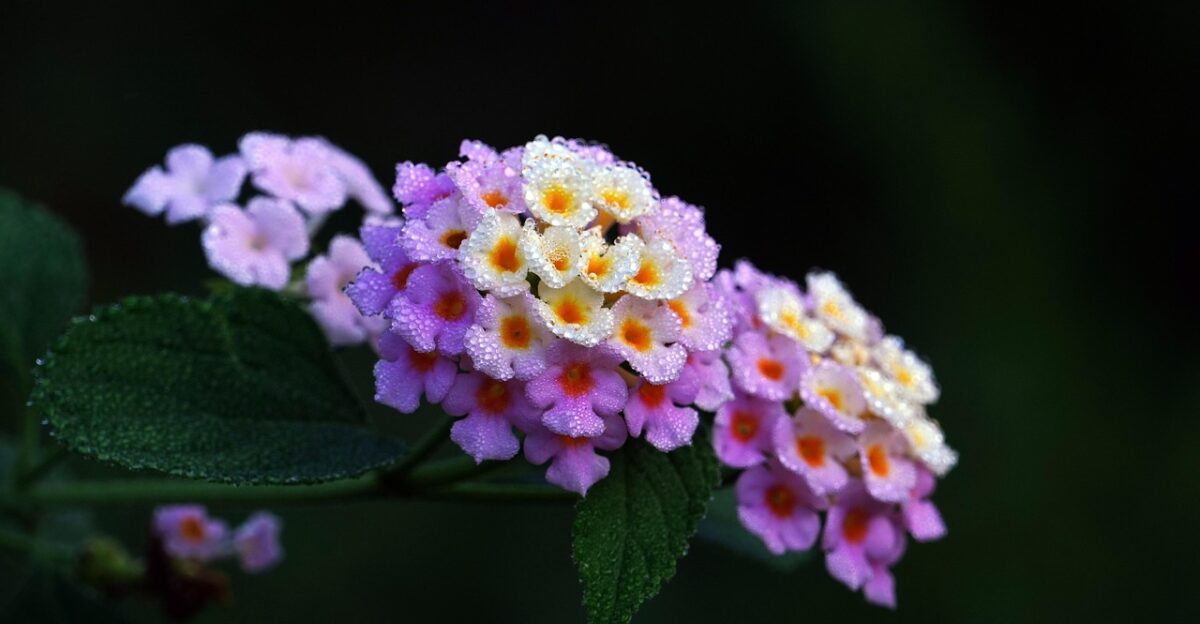
(Lantana camara)
This tropical shrub thrives in full sun and heat. It produces beautiful clusters of flowers in red, orange, yellow, and pink. Lantanas bloom all summer long, and sometimes, they might surprise you and bloom into fall. These plants need deep watering, and it is recommended that you wait for the soil to dry completely before watering again. If you keep pruning it, you will encourage bushiness and more blooms.
A few good things about this plant are that it is low maintenance, drought resistant, and attracts butterflies. While it has some pros, it can also become invasive in some areas and is mildly toxic to pets if ingested. Because the Lantana has such a long bloom season and is quite tough, it makes a good staple plant for summer gardens.
2. Marigolds
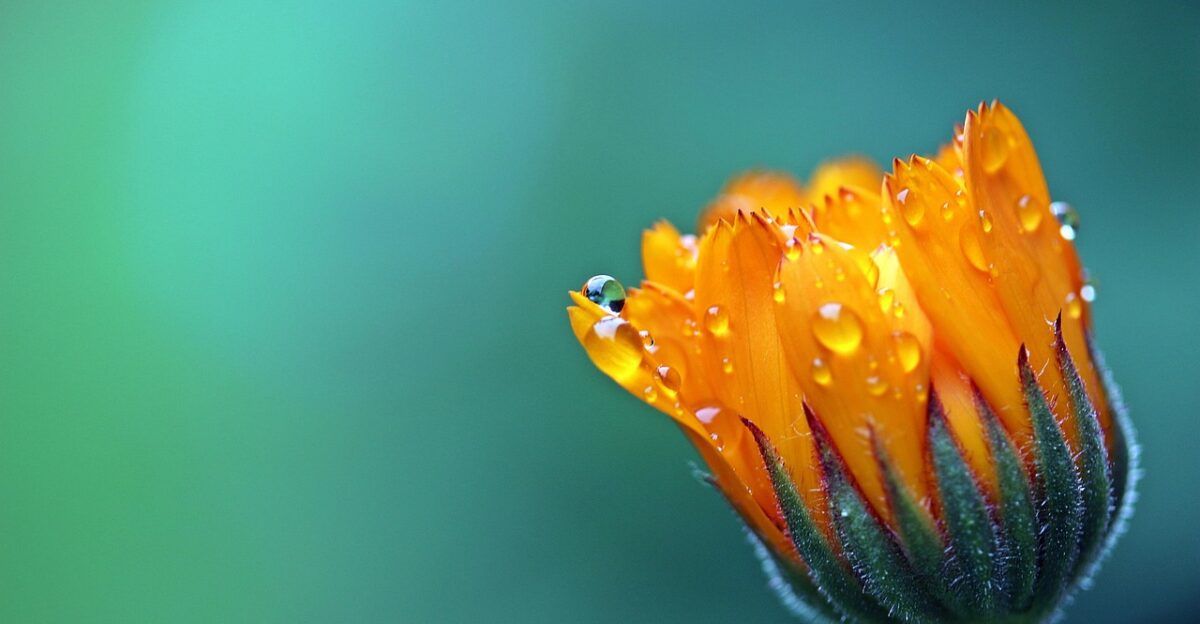
(Tagetes spp.)
These cheerful annual plants thrive in the sun and heat. Marigolds usually bloom from late spring until the first frost. They naturally repel many garden pests, making them an excellent choice for planting with vegetables.
They like to be planted in well-draining soil and can be moderately watered. They are also easy to grow and offer a vibrant color.
Because these plants are annuals, you will need to plant them yearly and exercise caution when overwatering them, as they will struggle in overly wet soil. Other than that, they are a resilient flower option.
3. Zinnias
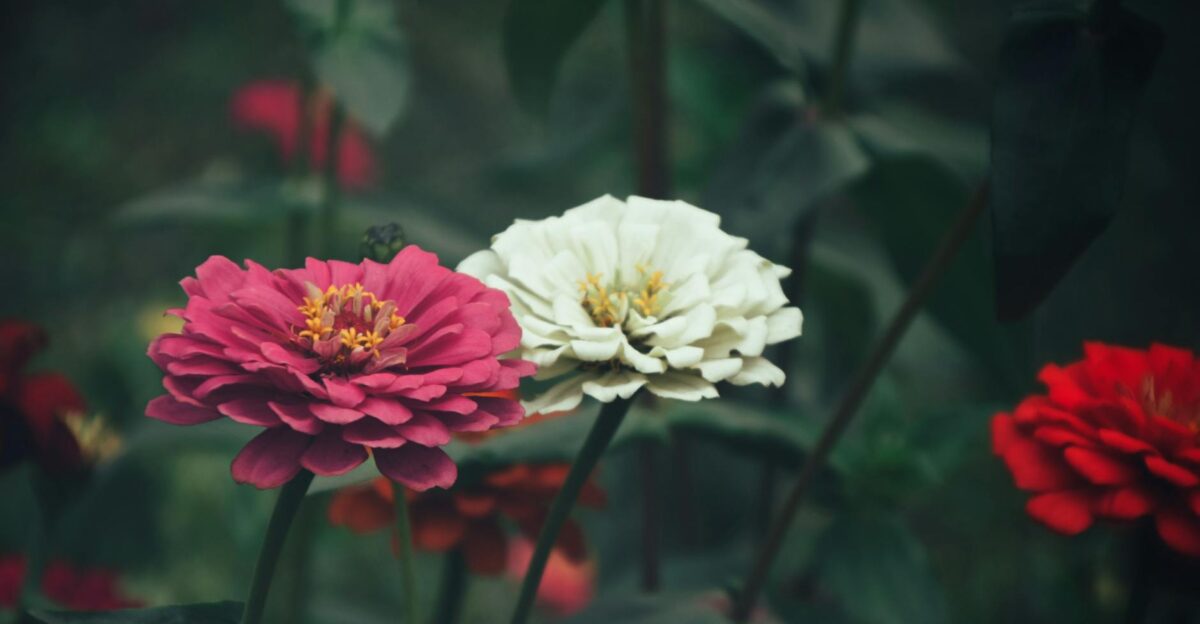
(Zinnia elegans)
These are also annual flowers that can tolerate the heat very well and thrive in full sun. Zinnias offer a long season of bright flowers in many sizes and colors as they bloom from summer through fall. These plants need well-drained soil. Also, water them deeply, but try avoiding watering overhead. You can pinch back the younger plants to encourage bushier growth.
Along with their long blooming season, Zinnias attract pollinators and are quite easy to grow. You will need to replant them yearly, and they can be prone to powdery mildew in humid conditions.
4. Canna Lilies

(Canna indica)
Having Canna Lilies in your garden would make you feel as if you are on a tropical holiday with their large, lush leaves and bright flowers in red, orange, and yellow. These flowers appreciate consistent moisture and bloom from summer to early fall. They love full sun and heat! A care tip to remember is to mulch to retain soil moisture and dig up rhizomes in colder climates to overwinter indoors.
They are known for their dramatic foliage and work great in containers. If they are not grown in a container, they might grow quite large and take up a lot of garden space. These plants also need some protection during the winter months.
5. Butterfly Weed

(Asclepias tuberosa)
These are native perennial plants with bright orange flower clusters. Butterfly weeds were named because of their huge attraction for butterflies (and bees). They bloom early in the summer and only end blooming in late August.
These flowers must be planted in drained soil and avoided overwatering. The good news is that when the plant is established, it becomes drought tolerant. While they are low-maintenance plants, they take some time to develop, and it might take a season or two before they bloom.
6. Aloe Vera
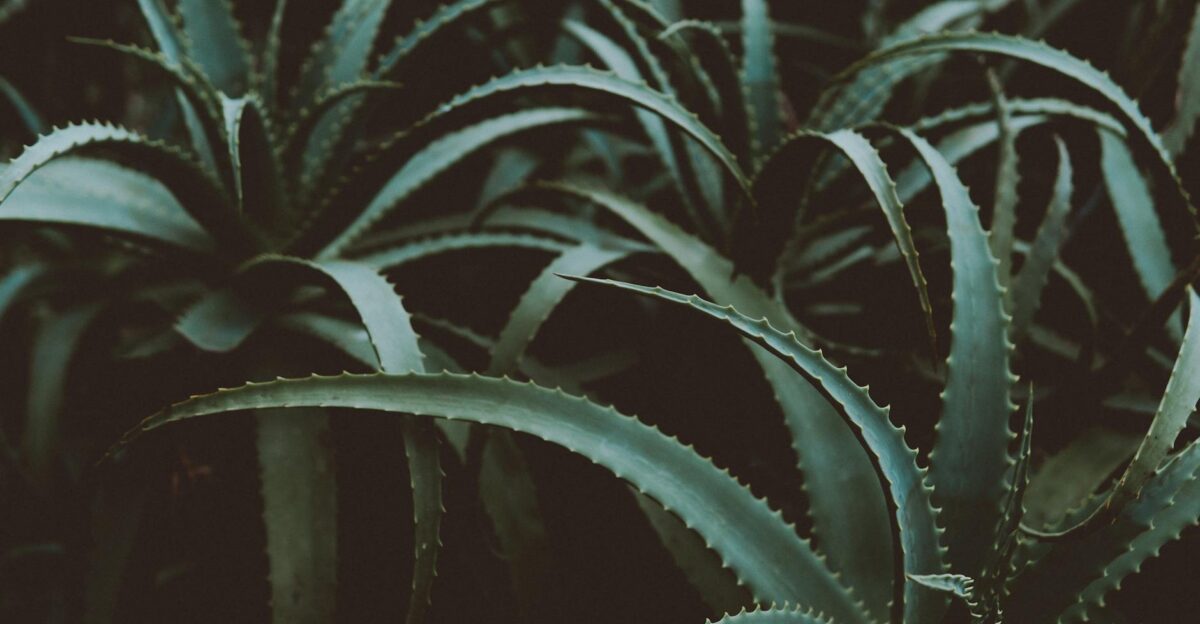
(Aloe barbadensis Miller)
Because aloe vera is a succulent with thick, fleshy leaves that store water, it is extremely drought tolerant. It depends on the variety (there are 500 of them), but aloe vera can bloom all year round. They give off torch-like flower spikes. These plants should only be watered once the soil is dry again, and they should also have well-drained soil to prevent root rot.
Other than blooming year-round, these plants also need little water and can have some medicinal uses. However, they thrive in the full sun, so aloe vera is super sensitive to frost and cold. They can also become leggy without enough light. This is definitely a very practical choice for hot and dry gardens.
7. Pentas
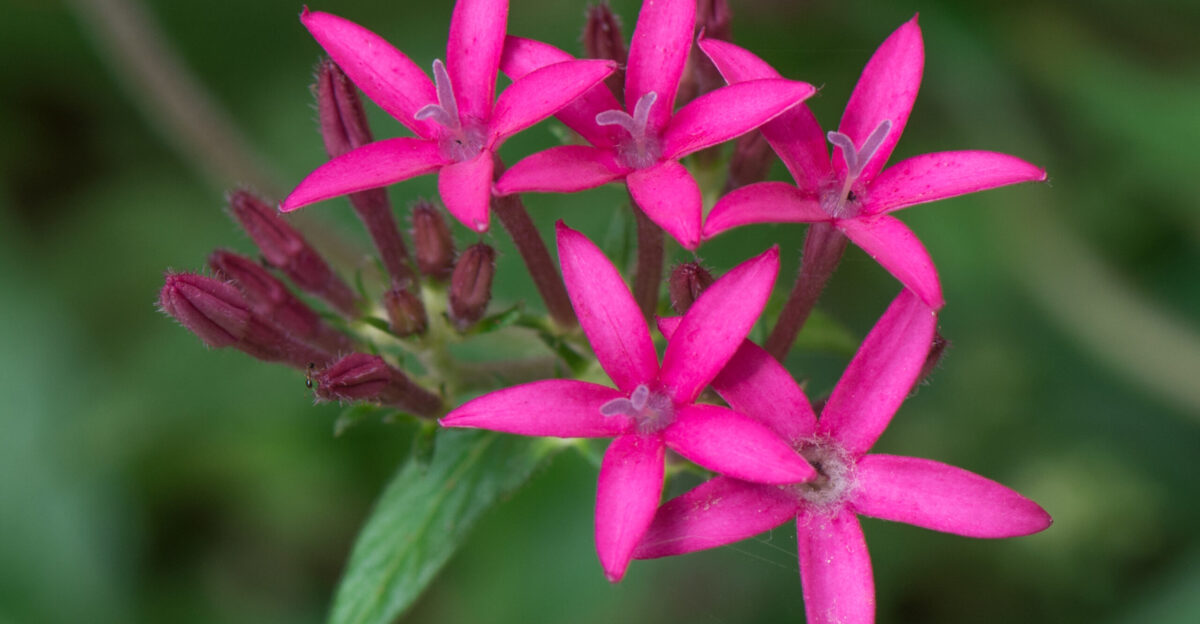
(Pentas lanceolata)
Pentas love the heat! They have cute star-shaped flowers in pink, red, white, and lavender. They are annuals that need to be replanted every year, but they bloom throughout summer. Pentas are known for attracting butterflies and hummingbirds.
A few good care tips include deadheading spent blooms to encourage more flowers, watering regularly, and planting them in well-drained soil. It is recommended that you start planting them in cooler climates.
8. Yucca
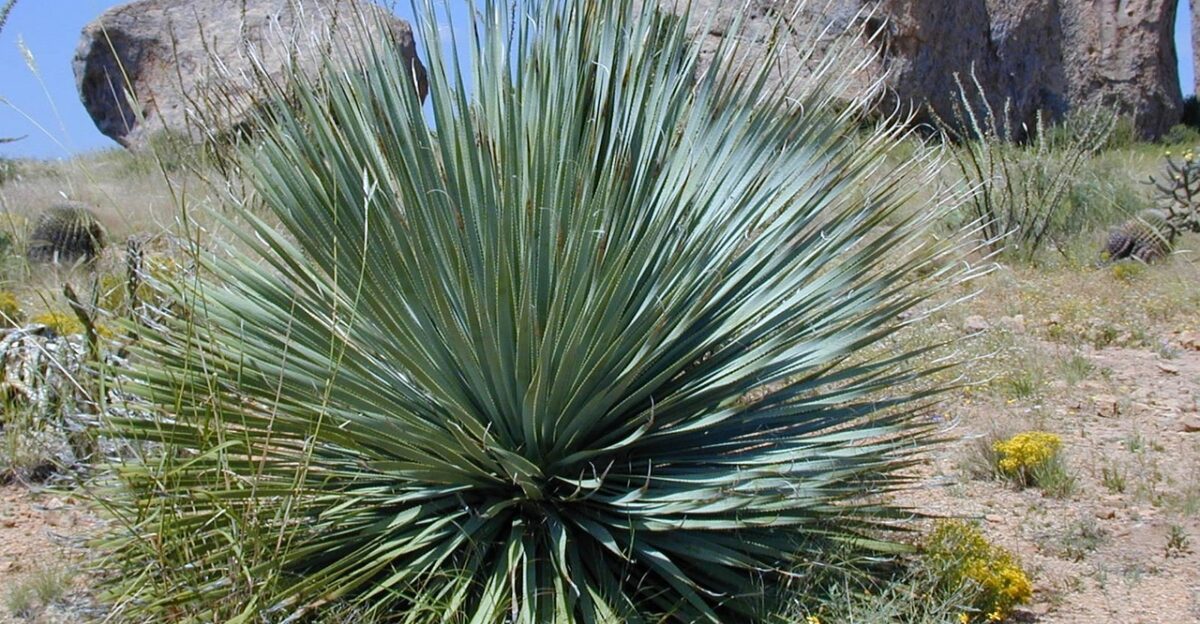
(Yucca filamentosa)
This is not a colorful plant, but it does have spiky, architectural leaves with tall flower spikes that carry creamy white blooms. The Yucca blooms in summer and does very well in hot, dry conditions. Once these plants are established (which tends to take some time), they don’t require a lot of watering.
It is recommended to plant these in full sun and well-drained soil. You should also avoid overwatering them. These plants are low maintenance and have a striking form, but their sharp leaves can be a hazard for small children and pets.
9. Moss Rose
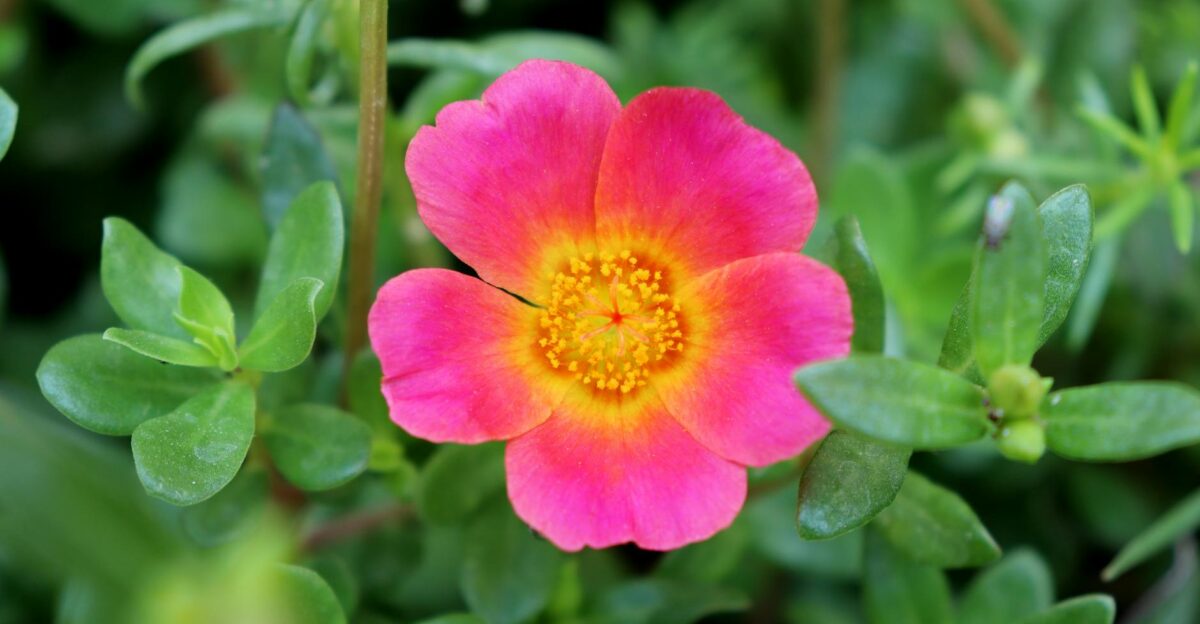
(Portulaca grandiflora)
These succulent annuals truly thrive in intense heat and poor, dry soil. The Moss Rose blooms from summer through fall and produces beautiful, vibrant flowers that are almost rose-like in many colors. It is best to water sparingly to prevent rot and overhead watering.
They are very heat—and drought-tolerant, which makes them a great low-maintenance plant that can also be planted as a ground cover. However, these plants can be sensitive when receiving too much water, and unfortunately, they need to be replanted yearly.
